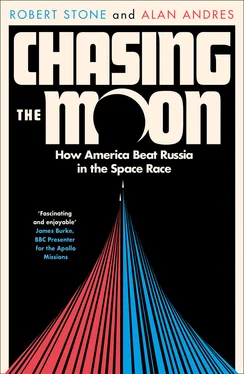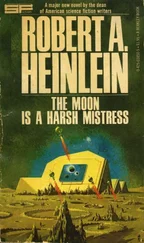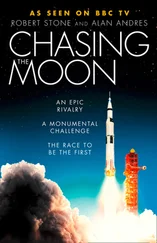At the end of the year, Collier’s gathered a symposium of space experts in the magazine’s New York office, where von Braun was joined by Ley, Whipple, Bonestell, and others. In conjunction with the magazine’s forthcoming issue, Collier’s commissioned a series of detailed full-color illustrations of giant spacecraft reaching orbit and showing how humans would live and work in space. These were based on plans and sketches drawn up by von Braun and his team in Huntsville. Von Braun also assigned Gerd de Beek, a former Peenemünde staffer now at Redstone, to construct scale models of the huge rocket and space station. It was de Beek who had painted the Frau im Mond insignia on the first successfully launched A-4 in 1942.
In the weeks before the March publication date, the Collier’s staff concluded that von Braun was such an asset that they chose him as their spokesperson to promote the special issue at media events. After his national television debut on the Camel News Caravan, von Braun appeared several more times on the new medium within twenty-four hours. In Manhattan he traveled from one network broadcast studio to another for scheduled live interviews on the most popular programs. In the morning he was on the Today show on NBC; by the afternoon he was in a CBS studio chatting with entertainer Garry Moore. He even put in an appearance at the end of the day during a broadcast of ABC’s children’s adventure series Tom Corbett, Space Cadet. Whenever he appeared, he brought along de Beek’s models to illustrate his argument.
After working nearly seven years with little national recognition, von Braun was exuberant that his American moment had arrived. “I’m tickled to death about this TV and radio business,” he wrote Ryan. “Space rockets are hitting the big time!”
The Collier’s issue looked like nothing that had been seen previously in a mass-circulation general-interest magazine. Bonestell’s color illustrations provided eye-catching visions of space vehicles heading into orbit and space stations under construction. Equally impressive were the magazine’s cutaway diagrams showing the interiors of von Braun’s huge rocket and the rotating space station. The attention to detail in these images conveyed a convincing sense of accuracy, even though they were based on plans that were entirely imaginary. With a circulation of three million copies and an estimated reach of twelve to fifteen million readers, that single issue of Collier’s was believed to have been seen by 8 to 10 percent of the American public.
The Collier’s publicity campaign included department-store window displays and posters on buses, subways, and newsstands. The cumulative effect not only promoted the magazine, it suddenly transformed von Braun into the world’s most visible public proponent for space exploration. Collier’s introductory editorial emphasized space as a national defense and security concern, though military implications were downplayed in the articles. In von Braun’s feature article, “Crossing the Last Frontier,” he made reference to his orbiting “atomic bomb carrier” space station, but apocalyptic scenarios were kept to a minimum. Not that Collier’s was averse to exploiting Cold War fears to sell issues; two years previously they had commissioned Bonestell to paint disturbing scenes of Manhattan consumed by an atomic mushroom cloud. But with their space issue, Collier’s presented a more optimistic technological vision of the future, which promised both adventure and a new domain for human exploration. It was a welcome relief from concerns about nuclear proliferation, Soviet espionage, and the ongoing Korean stalemate.
So favorable and resounding was the reader and media response to that Collier’s immediately began planning additional space-themed issues. The next one hit newsstands October 1952 and featured articles about the first human voyage to the Moon. Von Braun continued to make public appearances, such as an extended segment on the only network TV program about science, The Johns Hopkins Science Review, which broadcast three separate thirty-minute episodes discussing the Collier’s series.
Culturally, the Collier’s issues had prompted a significant shift in public attitudes toward human spaceflight: The subject was no longer ridiculed or approached with embarrassment. At the San Antonio conference the previous year, the organizers had been reluctant to use the word “spaceflight” in the event’s title, for fear that it would diminish its seriousness. After spring 1952, politicians speaking about space travel seldom encountered the derision David Lasser had experienced on the floor of the House of Representatives a decade earlier.
ON THE EVENING of July 9, 1952, CBS newsman Walter Cronkite sat in a wood-paneled studio in Chicago, covering the opening of the Republican National Convention. It was a decisive moment for the young journalist as well as for the country. Cronkite was anchoring the first live network broadcast of an American political convention. The GOP campaign had begun in New Hampshire the same week that von Braun made his TV debut. Now the field of candidates had narrowed to General Dwight D. Eisenhower, Ohio senator Robert Taft, and California governor Earl Warren.
The former speaker of the House, Joe Martin, Jr., gaveled the convention into session, and in a speech watched by millions, Martin attacked the Democrats in power as “disciples of a dead-end economy” who offered the youth of America nothing more than a “road to nowhere.” Martin then segued to offer a more optimistic vision of the future, and when doing so he appeared to have in mind a recent national magazine. “We have an entire new world about to unfold!” Martin promised. “I listen to the words of scientists and engineers…. They are optimistic! They are visionary beyond our fondest dreams! They say that science and technical skill are uncovering new horizons that all but defy the imagination.” He described new advances in medicine, power, and transportation. Then Martin turned to the heavens. “Travel in space! I mean interplanetary travel—in our solar system—no longer is the figment of a cartoonist’s imagination. It is on the verge of reality! Who knows what wonders lie beyond the limit of our atmosphere, what new worlds will open to us?”
A foreigner who had arrived in the United States on the Queen Mary a few days earlier watched the convention with great interest on the television set in his hotel room. Arthur C. Clarke was in America to promote the publication of his newest book of nonfiction, The Exploration of Space. The judges of the Book-of-the-Month Club had chosen it as a featured selection in the wake of the Hayden Planetarium conference and the enthusiastic response to the Collier’s issue.
Clarke sat up and listened to Joe Martin with astonishment. A politician was on national TV giving a speech that contained passages that could have been written by Clarke himself. “I didn’t expect the Republican Party to take official cognizance of the topics the science-fiction writers love to mull over,” he recalled later. He listened as Martin talked of smart “electronic computing machines” and wrist radios utilizing “a new invention no bigger than a postage stamp, called the transistor.” He was delighted. “After that, nothing could drag me away from the convention.”
This was only the second trip Clarke had taken outside of the United Kingdom, and as he traveled the United States, others aspects of 1950s America caught his attention. At the invitation of Ian Macaulay, a fanzine editor whom he had met at a science-fiction convention, Clarke traveled to Atlanta, Georgia. At that moment Macaulay was active in the fight for civil rights, organizing to end segregation in schools and public transportation and working to increase African American voter registration. Macaulay’s activism prompted some lengthy late-night discussions during which Clarke learned more about America’s long history of racial inequity.
Читать дальше












